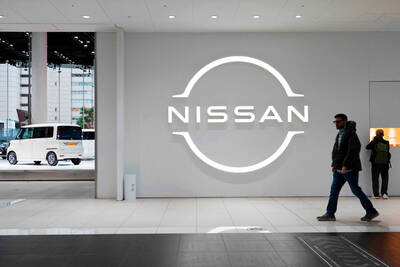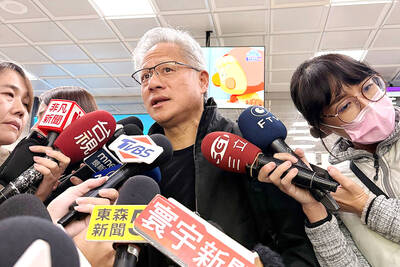To understand today’s global economy, look back 80 years.
Just like in the 1930s, growth is being constrained by companies unwilling to spend, falling inflation expectations and governments backing away from fiscal stimulus.
The trigger for the current malaise was the financial crisis that left a hangover of debt and deleveraging amid tighter banking regulations that are exacerbating deflationary pressures. It is similar to the kind of shock that preceded the 1930s slump, according to an analysis by Morgan Stanley economists led by Hong Kong-based Chetan Ahya.
“We think that the current macroeconomic environment has a number of significant similarities with the 1930s, and the experiences then are particularly relevant for today,” they wrote. “The critical similarity between the 1930s and the 2008 cycle is that the financial shock and the relatively high levels of indebtedness changed the risk attitudes of the private sector and triggered them to repair their balance sheets.”
Like then, the end result could be a prolonged weak period and subdued inflation expectations, with a risk that those price expectations are unanchored. The danger is that central banks move too quickly to raise interest rates or governments cut back on spending, triggering an even deeper slowdown.
“In 1936-37, the premature and sharp pace of tightening of policies led to a double-dip in the US economy, resulting in a relapse into recession and deflation in 1938,” the analysts wrote. “Similarly, in the current cycle, as growth recovered, policymakers proceeded to tighten fiscal policy, which has contributed to a slowdown in growth in recent quarters.”
Still, not every country is moving to tighten policy given the pessimism for global growth. The World Bank earlier this month cut its outlook for global growth, as business spending sags in advanced economies, including the US, while commodity exporters in emerging markets struggle to adjust to low prices.
World GDP is expected to grow by 2.4 percent this year, a pace that is unchanged from last year and down from the 2.9 percent estimated in January.
That soggy outlook is fueling a debate about how policy responds. One example is the US, where a move by the Federal Reserve in December last year to lift interest rates for the first time in nine years provoked criticism that the hike came too soon, given the subdued inflation outlook. Former US secretary of the Treasury Lawrence Summers has said that the Fed should not raise rates until it sees the “whites” of the eyes of inflation.
At the same time, finance chiefs from the world’s top economies promised in February this year that their governments would do more to boost demand. Since then, though, it has been central banks who have continued to stoke growth with easing by monetary authorities from Australia to Europe.
To avoid a new downward spiral, governments will need to step up, the Morgan Stanley analysts said.
“Activating fiscal policy, particularly at a time when the monetary policy stance is still accommodative, could lead to a virtuous cycle where the corporate sector takes up private investment, and sustains job creation and income growth,” they wrote.

Nissan Motor Co has agreed to sell its global headquarters in Yokohama for ¥97 billion (US$630 million) to a group sponsored by Taiwanese autoparts maker Minth Group (敏實集團), as the struggling automaker seeks to shore up its financial position. The acquisition is led by a special purchase company managed by KJR Management Ltd, a Japanese real-estate unit of private equity giant KKR & Co, people familiar with the matter said. KJR said it would act as asset manager together with Mizuho Real Estate Management Co. Nissan is undergoing a broad cost-cutting campaign by eliminating jobs and shuttering plants as it grapples

PERSISTENT RUMORS: Nvidia’s CEO said the firm is not in talks to sell AI chips to China, but he would welcome a change in US policy barring the activity Nvidia Corp CEO Jensen Huang (黃仁勳) said his company is not in discussions to sell its Blackwell artificial intelligence (AI) chips to Chinese firms, waving off speculation it is trying to engineer a return to the world’s largest semiconductor market. Huang, who arrived in Taiwan yesterday ahead of meetings with longtime partner Taiwan Semiconductor Manufacturing Co (TSMC, 台積電), took the opportunity to clarify recent comments about the US-China AI race. The Nvidia head caused a stir in an interview this week with the Financial Times, in which he was quoted as saying “China will win” the AI race. Huang yesterday said

TEMPORARY TRUCE: China has made concessions to ease rare earth trade controls, among others, while Washington holds fire on a 100% tariff on all Chinese goods China is effectively suspending implementation of additional export controls on rare earth metals and terminating investigations targeting US companies in the semiconductor supply chain, the White House announced. The White House on Saturday issued a fact sheet outlining some details of the trade pact agreed to earlier in the week by US President Donald Trump and Chinese President Xi Jinping (習近平) that aimed to ease tensions between the world’s two largest economies. Under the deal, China is to issue general licenses valid for exports of rare earths, gallium, germanium, antimony and graphite “for the benefit of US end users and their suppliers

Dutch chipmaker Nexperia BV’s China unit yesterday said that it had established sufficient inventories of finished goods and works-in-progress, and that its supply chain remained secure and stable after its parent halted wafer supplies. The Dutch company suspended supplies of wafers to its Chinese assembly plant a week ago, calling it “a direct consequence of the local management’s recent failure to comply with the agreed contractual payment terms,” Reuters reported on Friday last week. Its China unit called Nexperia’s suspension “unilateral” and “extremely irresponsible,” adding that the Dutch parent’s claim about contractual payment was “misleading and highly deceptive,” according to a statement